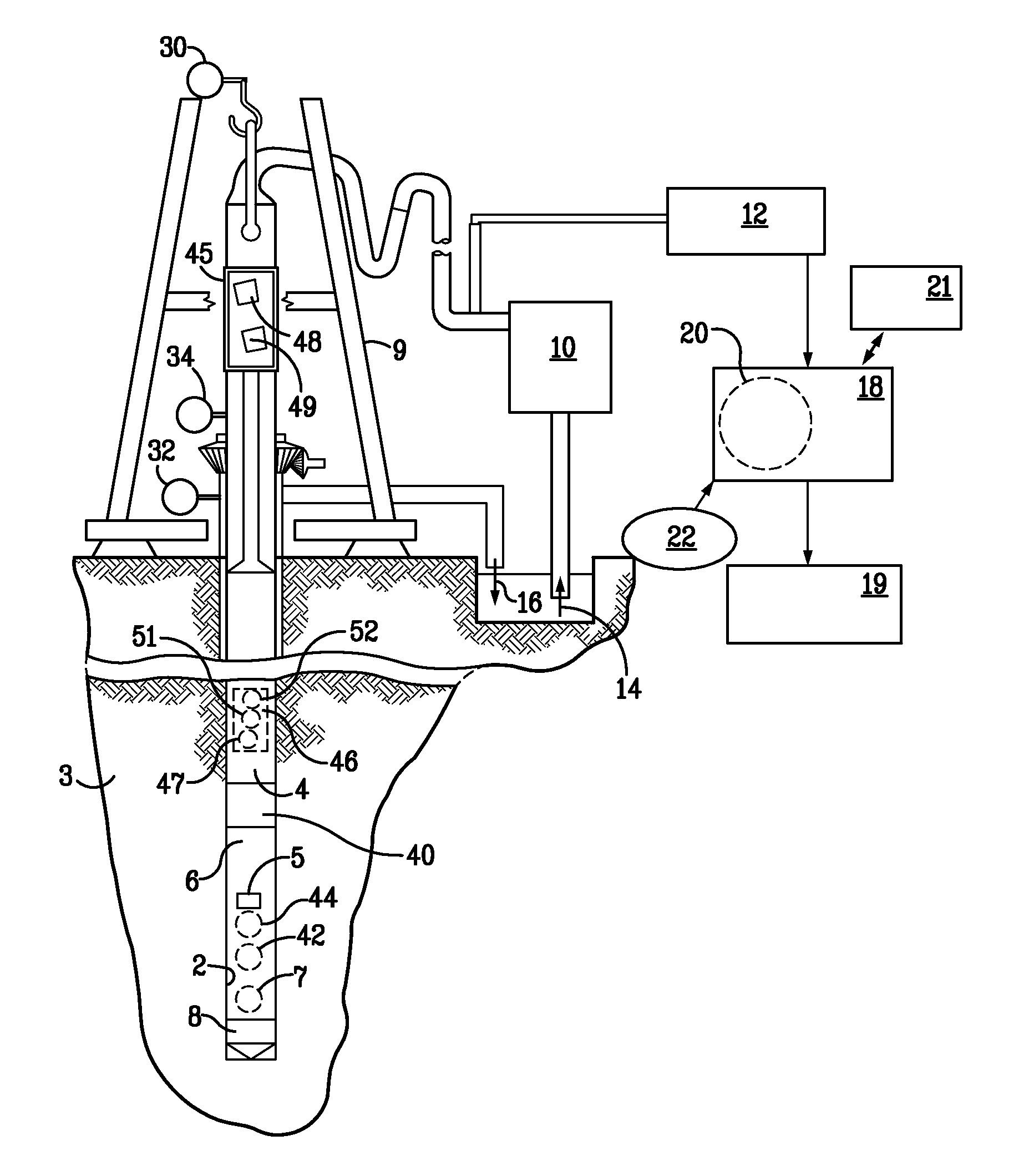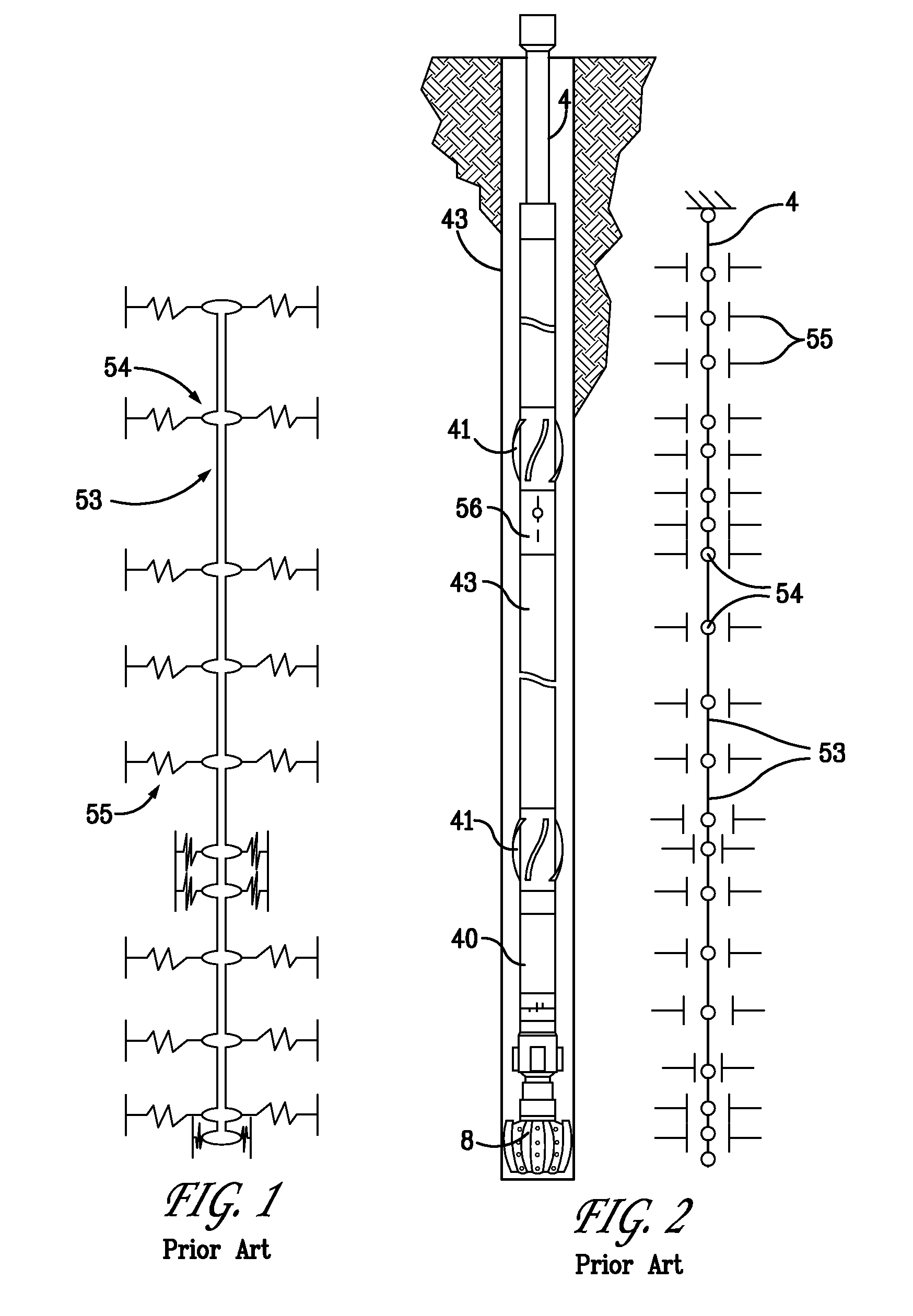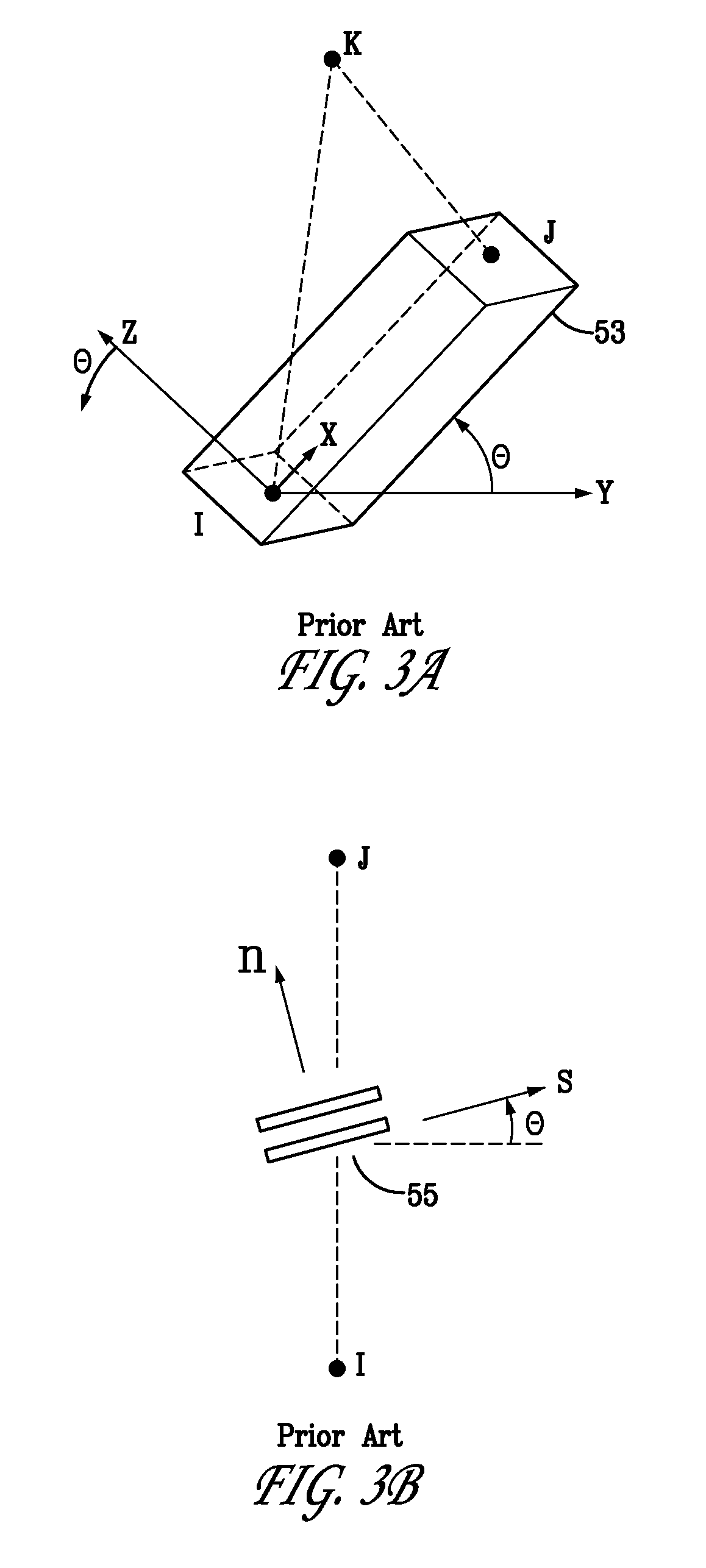System and Method for Monitoring and Controlling Underground Drilling
a technology of monitoring and controlling the operation of underground drilling, applied in the field of underground drilling, can solve the problems of premature failure of the various components of the drill string, premature dulling of the drill bit, and substantial vibration and shock in the drill string, and achieve the effect of reducing the difference between the measured vibration and the measured vibration
- Summary
- Abstract
- Description
- Claims
- Application Information
AI Technical Summary
Benefits of technology
Problems solved by technology
Method used
Image
Examples
Embodiment Construction
[0079]As shown in FIG. 4, drill rigs typically comprise a derrick 9 that supports a drill string 4. A drill bit 8 is coupled to the distal end of a bottomhole assembly 6 of the drill string 4. A prime mover (not shown), such as a top drive or rotary table, rotates the drill string 4 so as to control the rotational speed (RPM) of, and torque on, the drill bit 8. As is conventional, a pump 10 pumps a fluid 14—typically referred to as drilling mud—downward through an internal passage in the drill string. After exiting at the drill bit 8, the returning drilling mud 16 flows upward to the surface through an annular passage formed between the drill string 4 and the bore hole 2 in the earthen formation 3. A mud motor 40, such as a helicoidal positive-displacement pump—sometimes referred to as a “Moineau-type” pump—may be incorporated into the bottomhole assembly 6 and is driven by the flow of drilling mud 14 through the pump. A helicoidal positive-displacement pump is described more fully ...
PUM
 Login to View More
Login to View More Abstract
Description
Claims
Application Information
 Login to View More
Login to View More - R&D
- Intellectual Property
- Life Sciences
- Materials
- Tech Scout
- Unparalleled Data Quality
- Higher Quality Content
- 60% Fewer Hallucinations
Browse by: Latest US Patents, China's latest patents, Technical Efficacy Thesaurus, Application Domain, Technology Topic, Popular Technical Reports.
© 2025 PatSnap. All rights reserved.Legal|Privacy policy|Modern Slavery Act Transparency Statement|Sitemap|About US| Contact US: help@patsnap.com



